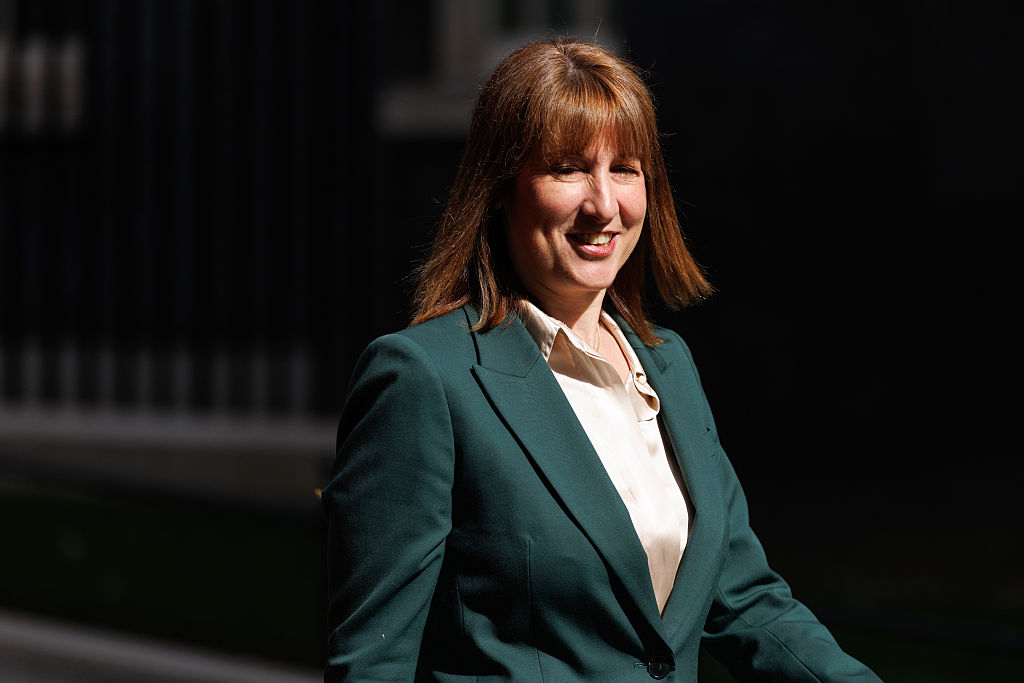Coronavirus: is the lockdown worth it?
The longer we are shut up in our homes, the greater the cost – including the cost in lives lost from other causes than Covid-19. At what point does the cure become worse than the disease?

What has happened?
In the wake of the coronavirus pandemic and lockdown, the UK economy appears to be heading for a recession far deeper than the one that followed the 2008 financial crisis – and a bigger contraction than analysts estimated just a couple of weeks ago. In 2009 the economy contracted by 4.2%. By contrast, with the economy grinding to a halt in the second quarter as shops shut and many businesses halted operations, four leading forecasters surveyed by the Financial Times now predict a contraction over the whole of 2020 of between 7% and 8%. That would make it the third-worst recession since 1900.
Won’t it depend on the exit strategy?
There are lots of caveats and unknowns in all the forecasts. With entire swathes of the economy shut down, “traditional forecasting methods become irrelevant”, warns Chiara Zangarelli, an economist at investment bank Nomura. But nevertheless there seems “little doubt” that second-quarter GDP contraction “will be off the scale”, as NatWest’s Michelle Girard puts it. There can be no doubt either that the longer the lockdown persists – and with scant sign of the UK developing plausible exit strategies – the debate over whether the lockdown is “worth it” will become louder.
Worth it in what sense?
Baldly: whether the economic damage wreaked by the lockdown is a price worth paying in terms of lives saved. How many bankrupt firms, or how many millions out of work, are acceptable? And if a lockdown fails to halt the pandemic, but merely contains it ready for a second wave, how long should the lockdown continue if it’s destroying the economy? It will strike some as uncomfortable, or even offensive, to pose such grim questions at the height of a pandemic. Many of this magazine’s readers and contributors have friends or relatives in hospital with Covid-19. The reality, however, is that trade-offs such as these are inevitable and calculating the “value” of a human life saved can be a helpful metric for economists and policymakers.
Subscribe to MoneyWeek
Subscribe to MoneyWeek today and get your first six magazine issues absolutely FREE

Sign up to Money Morning
Don't miss the latest investment and personal finances news, market analysis, plus money-saving tips with our free twice-daily newsletter
Don't miss the latest investment and personal finances news, market analysis, plus money-saving tips with our free twice-daily newsletter
What metrics do they use?
If we assigned an infinite value to each human life, spending any amount to protect it would make sense – leading quickly to governments going bankrupt. Instead, economists and policymakers use a metric known as the value of a statistical life (VSL) to assess the viability of different options. It is also common to calculate the value of a statistical life year (VSLY) by dividing the VSL by the remaining years of life expectancy for different ages groups being studied (with the effect of assigning a higher “value” to children, compared with the elderly, for example). The Department for Transport will fund a new road junction if it estimates a projected cost of less than £1.3m for each future life saved, for example.
What about healthcare?
Although we generally prefer not to talk about it, similar calculations are normal in healthcare. The NHS, as a centralised tax-funded system that’s free at the point of use, can only function on the basis of rationing, since demand is in theory infinite. That rationing sometimes takes the form of queuing and it sometimes takes the form of decision-making based on another key metric, the “quality-adjusted life year” (Qaly) – a metric related to VSLY, but which attempts to take into account the quality of remaining life as well as the quantity. Currently, under guidelines laid down by the National Institute for Health and Care Excellence (a body created, in part, to make these economic choices more explicit than previously), the NHS will fund non-palliative treatment for the seriously ill only if the treatment needed to provide a further year of good-quality life does not exceed £30,000. And in the case of people with potentially terminal illnesses, who could not expect a good quality of life, that £30,000 limit would typically be cut to £15,000 a year.
How do these metrics relate to Covid-19?
Dominic Lawson in The Sunday Times asked an American health economist to do a rough calculation for him. Say the shutdown costs the UK 4% of GDP, whereas no lockdown would have cost about 230,000 extra Covid-19 deaths (a figure based on the Imperial College modelling used by the government). Lawson’s economist estimates that the people saved would need to live on average 15 years to meet the Qaly limit of £30,000 to “justify” the $104bn hit to the economy. Or, assuming the life-quality of the unwell over-seventies is half that of a younger, healthier person, they would need to live on average for another 30 years. The questions then arise: are these plausible scenarios and how many of those dying of Covid-19, most of whom have underlying health conditions, would have been expected to die soon anyway.
So what can we conclude?
Obviously the lockdown is not responsible for the whole economic hit: people would have begun to “socially distance” and cut spending of their own accord. But it is at least germane to ask what the best way of “spending” that $104bn (and most likely more) is in order to save most lives. A crashed economy will also have associated health costs, especially if government revenues are so badly affected that the state’s ability to provide decent healthcare is compromised. For now, of course, there are too many unknowns on which to make confident assertions. Any prediction is only as good as the assumptions it is based on and more than three months after the novel coronavirus emerged in China, the world’s scientists still don’t know how many people can infect others without suffering from symptoms themselves. For now we are all in the hands of the epidemiologists, but the longer this goes on the higher the costs and hence the more we can expect to hear about the dismal calculus of the economists.
Get the latest financial news, insights and expert analysis from our award-winning MoneyWeek team, to help you understand what really matters when it comes to your finances.
Simon Wilson’s first career was in book publishing, as an economics editor at Routledge, and as a publisher of non-fiction at Random House, specialising in popular business and management books. While there, he published Customers.com, a bestselling classic of the early days of e-commerce, and The Money or Your Life: Reuniting Work and Joy, an inspirational book that helped inspire its publisher towards a post-corporate, portfolio life.
Since 2001, he has been a writer for MoneyWeek, a financial copywriter, and a long-time contributing editor at The Week. Simon also works as an actor and corporate trainer; current and past clients include investment banks, the Bank of England, the UK government, several Magic Circle law firms and all of the Big Four accountancy firms. He has a degree in languages (German and Spanish) and social and political sciences from the University of Cambridge.
-
 Review: Eden Roc Cap Cana – fun, sun and golf in the Caribbean
Review: Eden Roc Cap Cana – fun, sun and golf in the CaribbeanTravel Eden Roc Cap Cana in the Dominican Republic offers everything from relaxing by the pool to a world-class golf course
-
 Reeves delays cash ISA reform, but savers are not out of the woods yet
Reeves delays cash ISA reform, but savers are not out of the woods yetThe chancellor has reportedly delayed plans to cut the cash ISA limit, which were set to be announced at Mansion House on 15 July, and will take more time to consult with the industry
-
 UK wages grow at a record pace
UK wages grow at a record paceThe latest UK wages data will add pressure on the BoE to push interest rates even higher.
-
 Trapped in a time of zombie government
Trapped in a time of zombie governmentIt’s not just companies that are eking out an existence, says Max King. The state is in the twilight zone too.
-
 America is in deep denial over debt
America is in deep denial over debtThe downgrade in America’s credit rating was much criticised by the US government, says Alex Rankine. But was it a long time coming?
-
 UK economy avoids stagnation with surprise growth
UK economy avoids stagnation with surprise growthGross domestic product increased by 0.2% in the second quarter and by 0.5% in June
-
 Bank of England raises interest rates to 5.25%
Bank of England raises interest rates to 5.25%The Bank has hiked rates from 5% to 5.25%, marking the 14th increase in a row. We explain what it means for savers and homeowners - and whether more rate rises are on the horizon
-
 UK inflation remains at 8.7% ‒ what it means for your money
UK inflation remains at 8.7% ‒ what it means for your moneyInflation was unmoved at 8.7% in the 12 months to May. What does this ‘sticky’ rate of inflation mean for your money?
-
 VICE bankruptcy: how did it happen?
VICE bankruptcy: how did it happen?Was the VICE bankruptcy inevitable? We look into how the once multibillion-dollar came crashing down.
-
 Would a food price cap actually work?
Would a food price cap actually work?Analysis The government is discussing plans to cap the prices of essentials. But could this intervention do more harm than good?